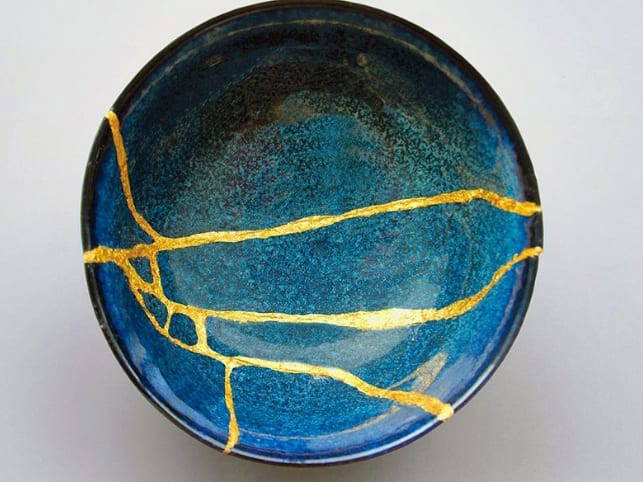Many of us go in to therapy feeling broken and scarred by our past experiences, clients often ask if therapy will enable them to rewrite their story and put sad events behind them. Put simply we can certainly learn to be with painful experiences by talking about them but rewriting our story is never possible.
So how do we learn to be with the scarred bits of ourselves, learn to accept them and even celebrate the resilience they show us?
The Japanese art of Kintsugi belongs to the Zen ideal of wabi sabi, which cherishes what is rugged, simple and sometimes not traditionally beautiful. Think of those amazing revered Japanese trees; ancient, twisted, gnarled and deeply spiritual.
Kintsugi is where a broken pot is fixed, not to be invisible, but to show its breaks using gold to fill the cracks. The result is not the same pot, but something which celebrates the breaks and even highlights them. The pot becomes more beautiful in its imperfection and they are magnificent, in a way the perfect pot was not.
One of my past clients; a potter, took up Kintsugi after years of depression and loss. She often said she resonated with the broken pots as she repaired them, feeling herself healing with every pot she recreated. She told me that she often noticed how the pots became something more unusual or even stronger where they had been broken.
Kintsugi teaches us that in the broken we become more resilient, we survive and even, in time, can cerebrate the strength and courage it took to overcome these painful times in our lives. We can never rewrite our stories, but we can learn to see the beauty in them and over time accept them.

